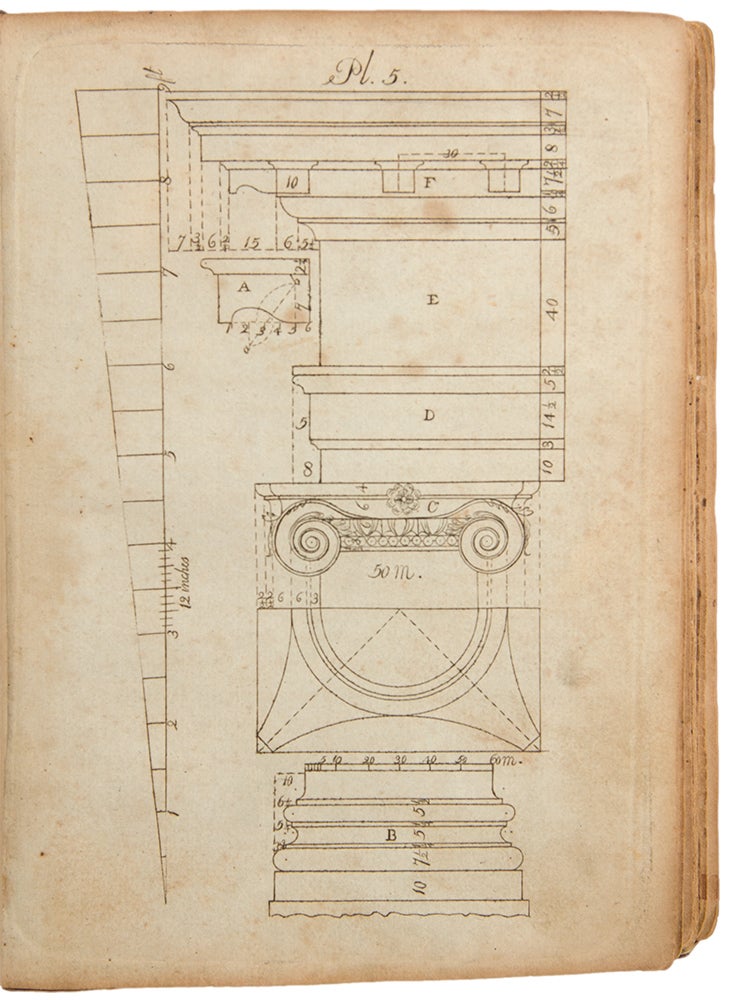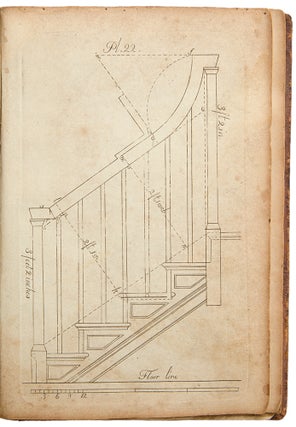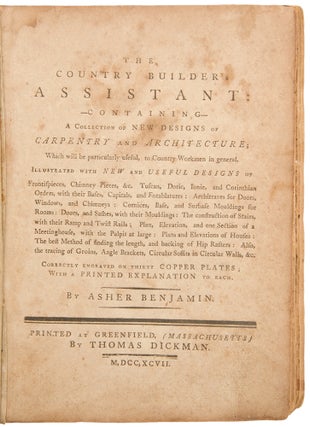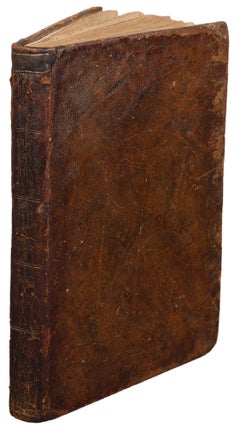BENJAMIN, Asher (1773-1845).
The Country Builder's Assistant: Containing a Collection of New Designs of Carpentry and Architecture
Greenfield, MA: Thomas Dickman, 1797. Small 4to. (7 11/16 x 5 1/2 inches). [32]pp. Thirty engraved plates (two folding). Somewhat toned. Plate 21 strengthened with old paper backing on verso.
Contemporary calf, flat spine ruled in gilt. Old repair to spine. In modern red morocco backed slipcase and folding chemise.
The first edition of the earliest book of architecture written by an American and printed in the United States: a legendary rarity, a landmark work, and a cornerstone of any collection on American arts. "There is scarcely a village which in moulding profiles, cornice details, church spire, or farm-house does not reflect his influence" (DAB).
Earlier architectural works printed in the United States were simply compilations or reprintings of British material (e.g. John Norman's Town and Country Builder's Assistant of 1786). Benjamin's work is a classic and important American architectural treatise, by the man who was most responsible for disseminating late colonial details throughout New England, beautifully illustrated with engravings of colonial buildings, elevations of churches and homes, ornaments, cornices, etc., reflecting the influences of the Doric, Ionic, and Corinthian orders. "The career of the first American architectural writer, Asher Benjamin (1773-1845), covered several decades of the early nineteenth century. Both the books he wrote and the buildings he designed had an influence on building in New England that is still visible. He probably will be best remembered for his popularization of the federal style through his early books (and the Greek revival in his later ones)" (Thompson). As with the present copy, most copies of Benjamin's book were heavily used, accounting for its present rarity. Although the title states that each plate would be accompanied by textual descriptions, no descriptions were issued for plates 25-27. As a testament to its importance in the development of American architecture, the text appears in several relevant exhibition catalogues. These include: "The Sources of Classicism," Univ. of Texas, 1978 (later edition); "Printed Books on Architecture," Univ. of Illinois, 1960 (later edition); "The Builder's Guide," Colby College, 1969 (later edition), "The Colonial Scene," John Carter Brown Library, 1950; "A Society's Chief Joys," American Antiquarian Society, 1969; and "Wellsprings of a Nation," American Antiquarian Society, 1977.
Rink 2482; Evans 31797; Hitchcock 111; Romaine 245:21; ESTC W11972; Hafertepe, K. American architects and their books to 1848, 2001, p. 145; Neville Thompson, "Tools of Persuasion: The American Architectural Book of the Nineteenth Century" in The American Illustrated Book in the Nineteenth Century (1987), p.142; Abbot Lowell Cummings, An Investigation of the Sources, Stylistic Evolution, and Influence of Asher Benjamin's Builders' Guides (Ohio State University, Unpublished Doctoral Dissertation, 1950).
Item #39780
Price: $24,000.00






